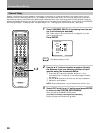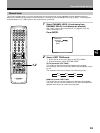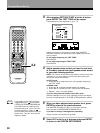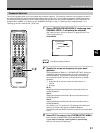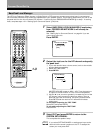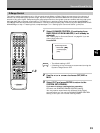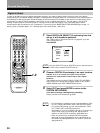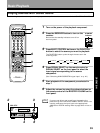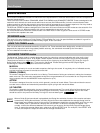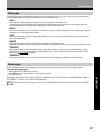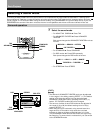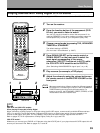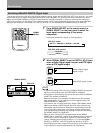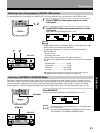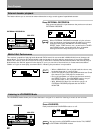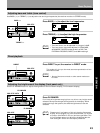
36
Basic Playback
Sound Modes
The five sound modes on the VSX-27TX/26TX/24TX are explained here. These can be turned on from the front panel or
from the remote control.
There are three cinema modes: STANDARD, HOME THX CINEMA, and ADVANCED THEATER. These are designed to be
used with multi channel surround sound audio/visual sources (like DVDs and LDs). Intrinsic to home theater, these
modes can deliver realistic and powerful surround sound that recreates the movie theater experience. You may need to
experiment with them to see which settings suit your home system and personal tastes.
The DSP and STEREO modes are designed to be used with music sources but some DSP modes are also suited for film
soundtracks. Again, try different settings with various soundtracks to see which you like.
You must choose one of the three cinema modes or the DSP mode in order to get surround sound. In STEREO mode
only the front two speakers are used.
STANDARD mode
This mode is for pure decoding of Dolby Digital, DTS and Dolby Pro Logic. No special effects are added. It is good for
enjoying movies that have been recorded in Dolby Digital, DTS or Surround.
HOME THX CINEMA mode
THX is a set of technical standards created by Lucasfilm, Ltd. These standards were designed to emulate a film sound
stage and thus reproduce, with the greatest possible accuracy, the soundtrack intended by the filmmakers.
For more detailed information see p. 74
ADVANCED THEATER modes
The Advanced Theater mode is a newly designed system for enhancing movie soundtracks and other audio-visual
sources. It incorporates the use of DTS (Digital Theater System) as well as Dolby Digital into its sound processing.
These functions switch on automatically when the source you are playing is encoded with DTS, Dolby Pro Logic or
Dolby Digital (bearing the
DOLBY
DIGITAL
logo). There are four Advanced Theater settings that use DSP (Digital Signal
Processing) to create different types of sound environments.
MUSICAL
This mode is primarily for music and adds a spacious feeling to the sound. A long delay time of reflected sounds,
provides resonant tones which emulate a concert hall.
DRAMA (CINEMA)
This mode is designed for movies with a lot of dialog. The elements of dialog are enhanced, making the characters
seem more real. The mode also compresses the dynamic range somewhat so loud sounds do not overpower softer
ones (compare this with the MIDNIGHT mode explained on p.41).
ACTION
This mode is designed for action movies, which generally use lots of sound effects. The mode enriches the sound
to make it more realistic and extends the parameters to pick up high and low sound effects.
5-D THEATER
This mode is especially designed to give sound depth to stereo sources. The overall effect builds a dynamic and
broad sound space, allowing two-channel (stereo) signals to faithfully imitate a five speaker sound. The mode
should be used in conjunction with Dolby Pro Logic for sources bearing the
DOLBY SURROUND
mark.
memo
When a Dolby Digital soundtrack is played back the Dialog Normalization function of the receiver activates
automatically. Dialog Normalization is a Dolby Digital function that establishes the average dialog level for
the program source being played. If the receiver's level does not match the average dialog level, first you see
"DIAL. NORM" flash in the receiver's display and next OFFSET +4 dB (as an example) will appear. The
number +4 dB is the difference between the receiver's gain structure and the Dolby Digital average dialog
level. To match the average dialog level, subtract or add the OFFSET level. For example, if the OFFSET level
is +4 dB, the amplifier's output is 4 dB over the average recorded level.



